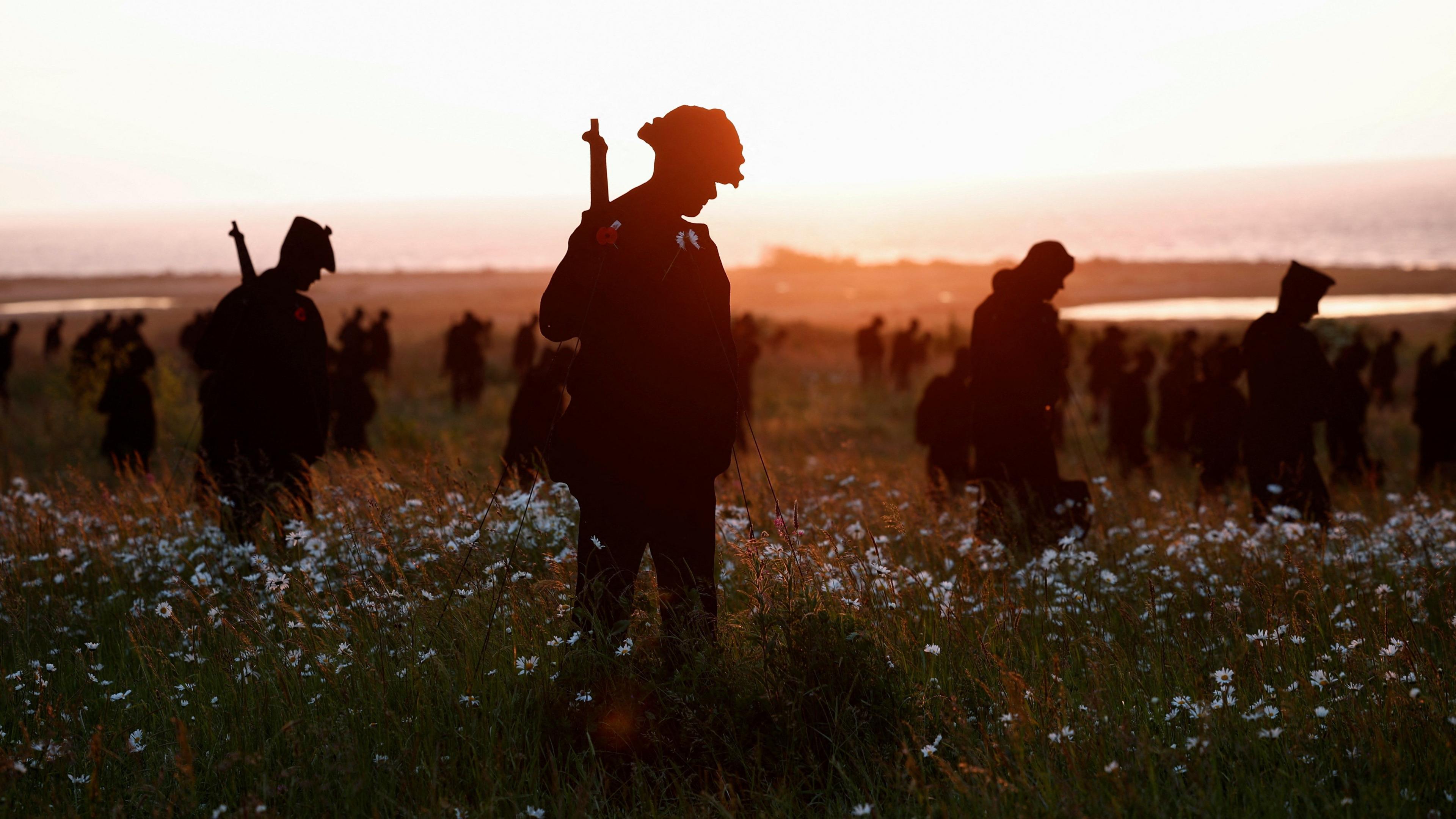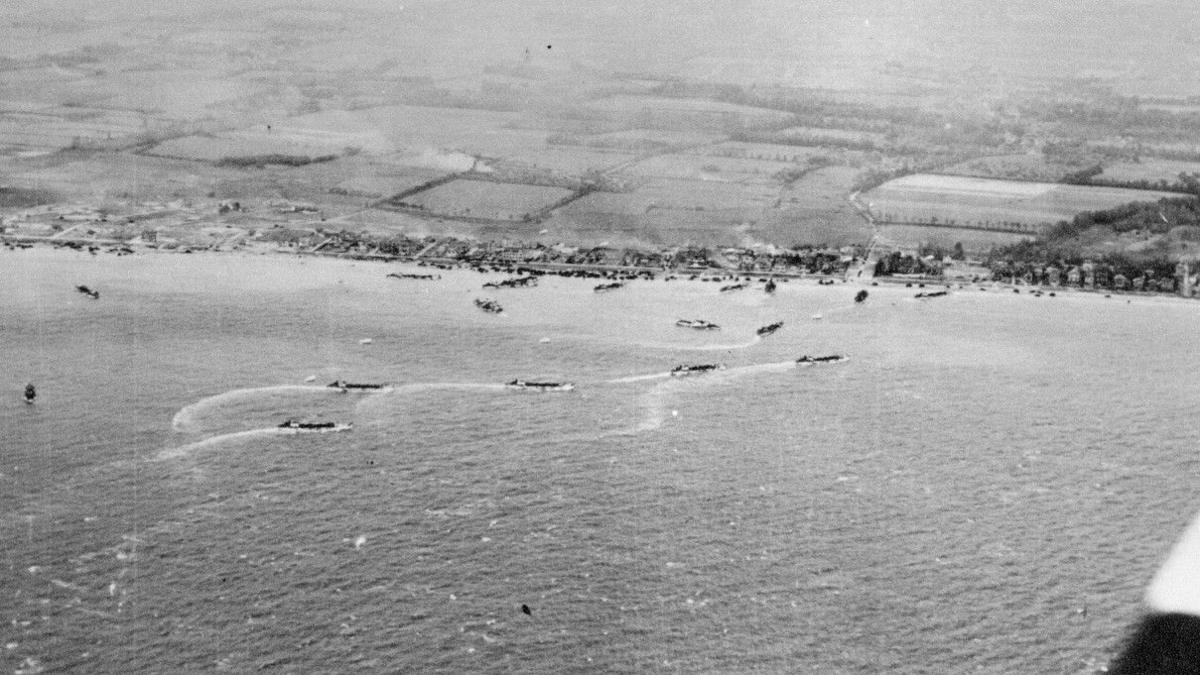What role did weather forecasters play in WW2 victory?

Art installation of silhouettes representing British soldiers who died during World War Two on display at the British Normandy Memorial called "Standing with Giants".
- Published
As celebrations to commemorate the 80th anniversary of Victory in Europe Day ramp up, let us consider the impact of one of the most crucial weather forecasts in history.
The D-Day landings, which took place a year before liberation, marked a pivotal moment during World War Two.
It was the largest seaborne invasion in history with over 150,000 troops alighting across five beaches. Its success was highly dependent on favourable weather.
Thanks to the intervention of a weather forecaster, D-Day narrowly avoided being one of the biggest disasters in military history.
Why was the weather important?
Low tides and quiet weather were vital to getting such a huge number of troops onto the beaches of France.
With a full moon giving good visibility and low tides expected on 5, 6 and 7 June, there was huge pressure to deliver a favourable weather forecast.
Even now in a world of computer modelling, satellite and radar data and widespread observations, forecasting the weather 24 hours ahead of time can be a challenging task.
But in 1944 it was even more difficult - not least the job of trying to predict conditions several days ahead.

A handout picture of an aerial view of Normandy beach on D-Day on 6 June 1944, provided by the Ministry of Defence.
A late weather observation
The invasion date was initially set for 5 June.
But the army's Chief Meteorologist, Group Captain James Stagg spotted a potent area of low pressure set to move across the UK that day, bringing strong winds and extensive low cloud to the English Channel making the attempt too risky.
Then as the weather charts were being drawn up on 4 June, a late weather observation from a ship in the Atlantic identified a potential brief ridge of high pressure building after the low passed.
This, Stagg believed, would be enough to provide a "window of opportunity" and enough of a break in the weather for the invasion to take place on the 6 June instead.
- Published6 June 2024
- Published6 June 2024
Did the risk pay off?
The invasion went ahead on 6 June when the brief weather window opened up, but conditions were - if anything - slightly worse than expected and far from ideal.
Low cloud sat over parts of the northern coast of France, limiting visibility of the ground to aircraft overhead. Winds were also stronger, making seas rougher and the tides higher.
The Channel crossing became vomit-inducing and energy-sapping for many troops, making landing on the coast far more challenging than had been anticipated.
However, the risk of taking the decision to invade in such marginal conditions paid off. The Germans were taken by surprise and the course of the war changed.
How much do you think you know about other battles throughout history where the weather played a role?
Try our BBC Weather quiz and find out.